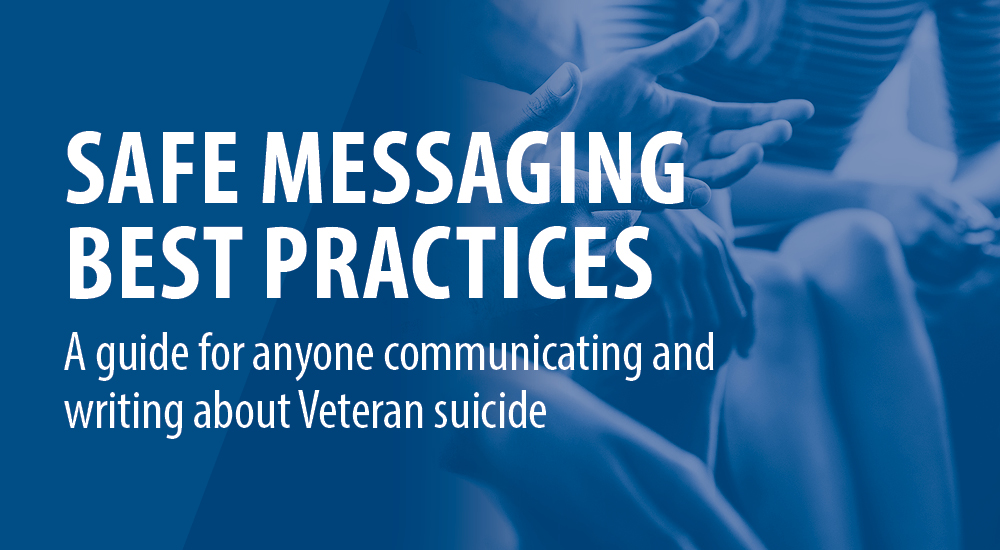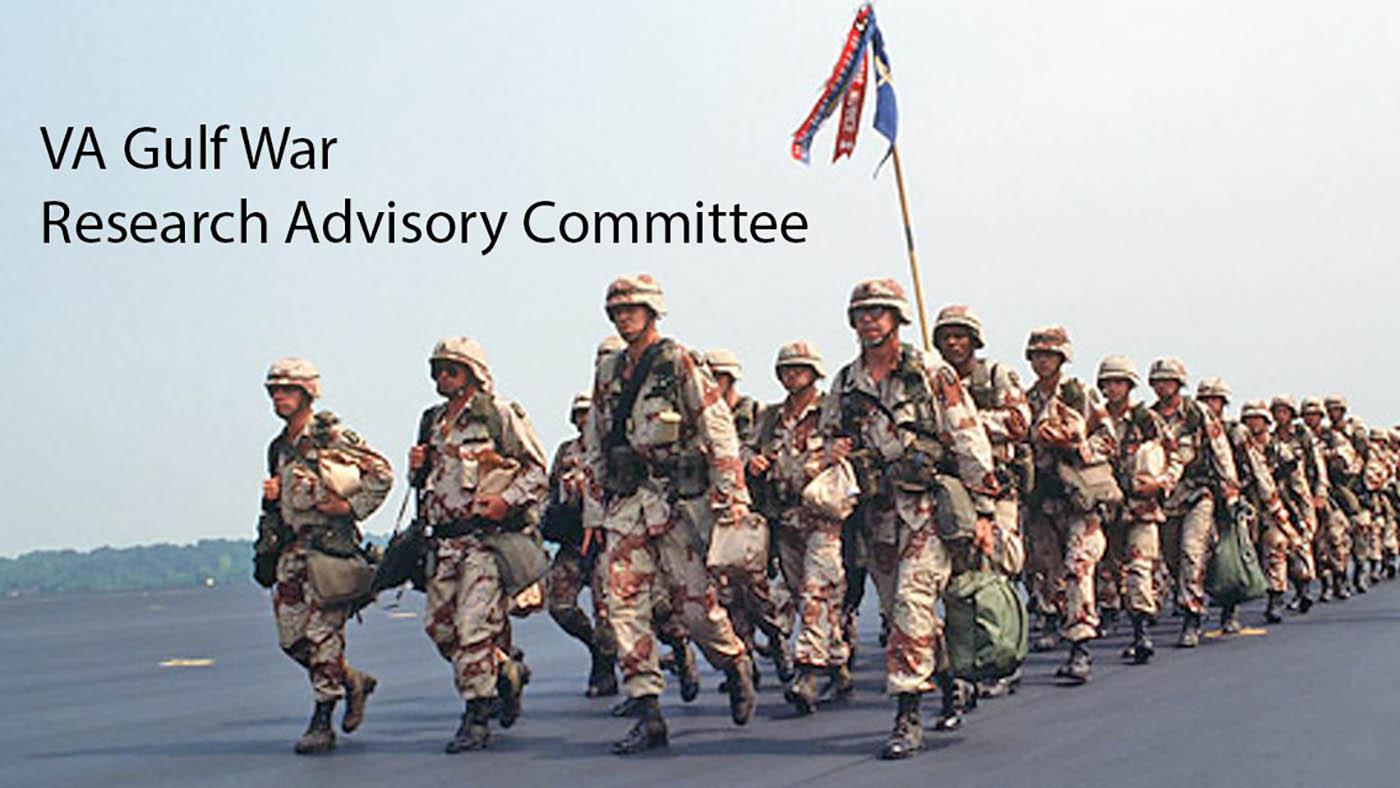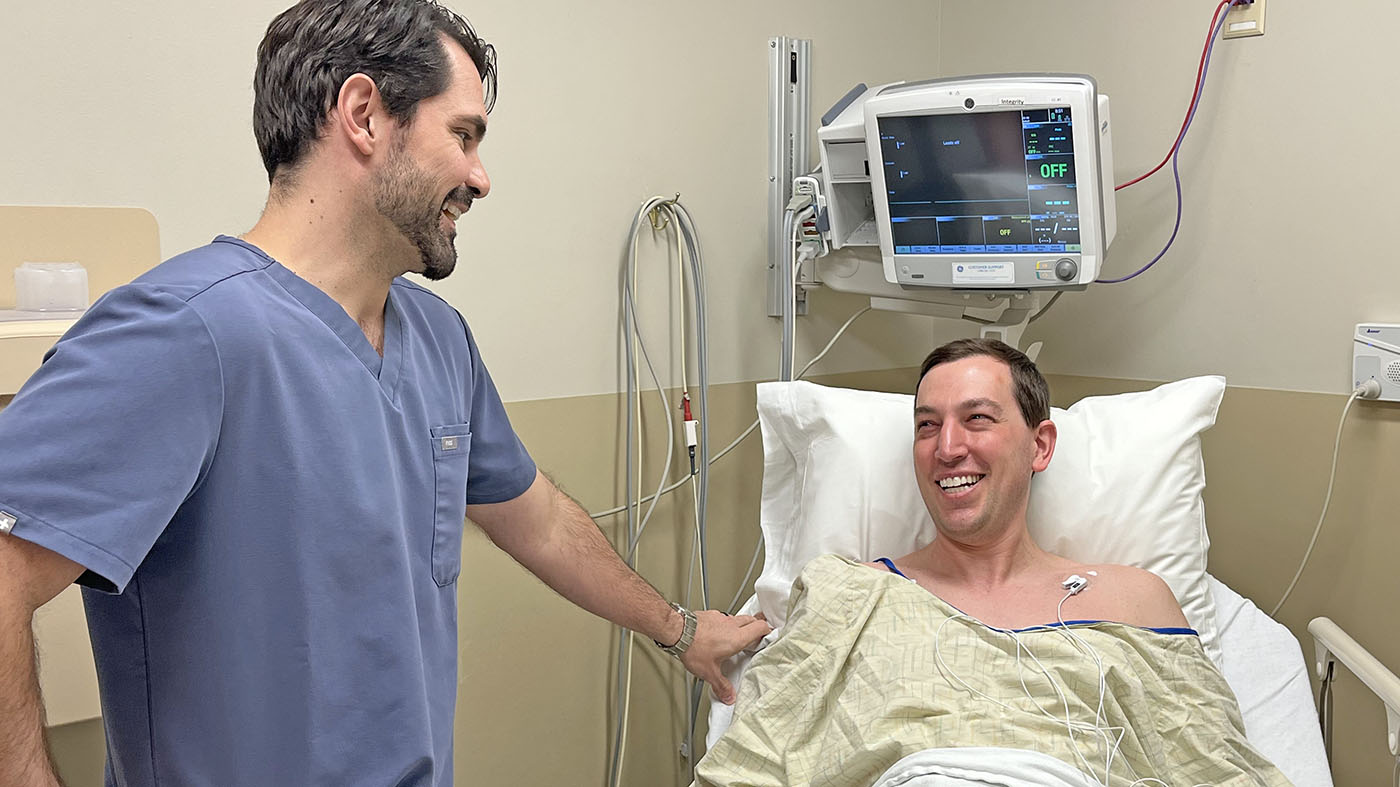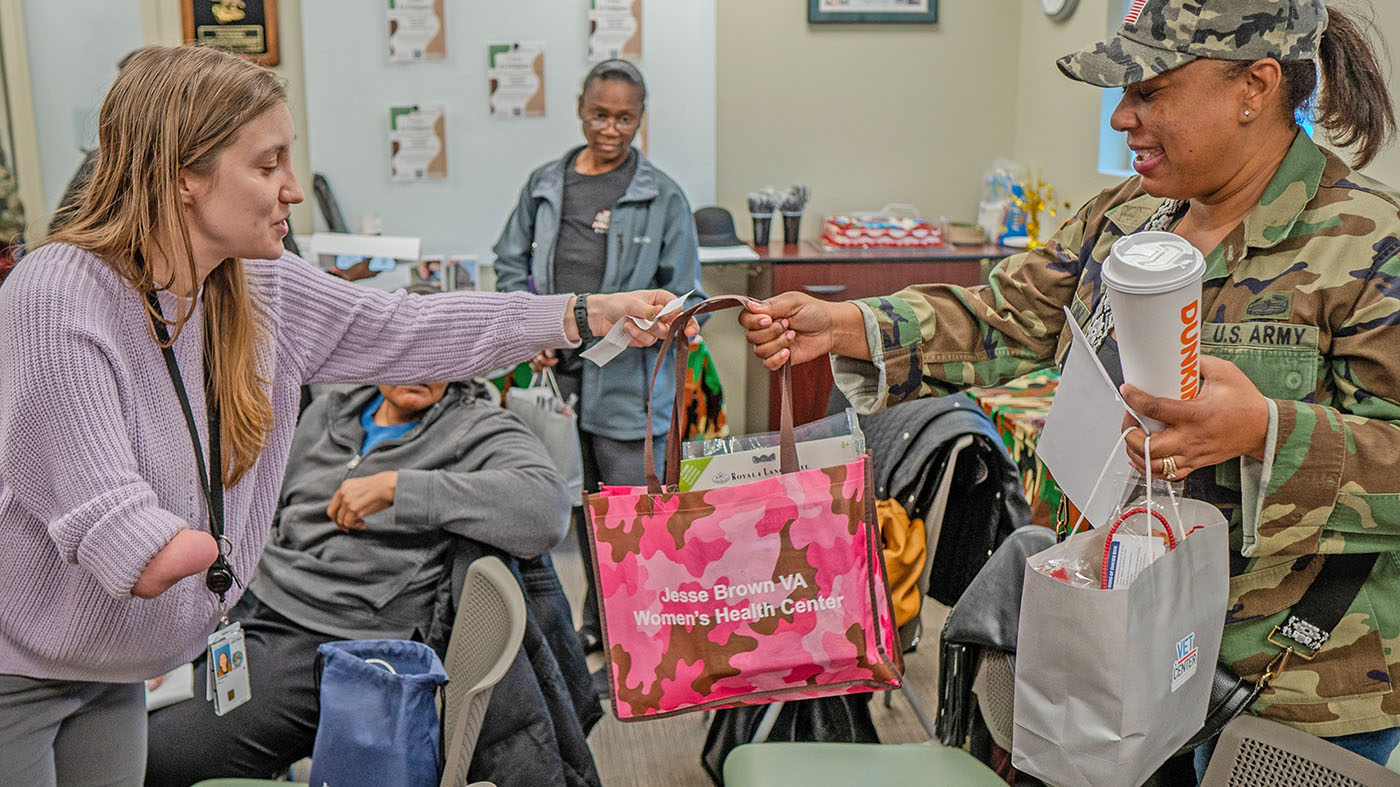Suicide is preventable, and we all have a role to play.
More than 50 research studies worldwide have shown the way we talk about suicide can influence behavior – either positively or negatively. Suicide is a national public health issue that affects people from all walks of life and how we communicate about it can either encourage help-seeking or increase “copycat” suicide, which occurs when exposure to suicide or suicidal behaviors contributes to another suicide.
According to Dr. Keita Franklin, executive director, suicide prevention for VA’s Office of Mental Health and Suicide Prevention, there are things we can all do to help.
“It’s important for us to remember that the way we talk about suicide can have life-changing consequences,” Franklin said. “A story that uses careful, thoughtful language can encourage someone to seek help. On the other hand, one that uses sensational and graphic language can influence someone in a dangerous way. It’s our job to ensure that we are communicating about suicide in a safe and responsible way.”
Family members, friends and the community can all play a role in preventing Veteran suicide. In fact, sometimes even small changes – to a word or phrase, for example – can make a difference. Here are some tips to keep in mind:
- Use phrases such as “died by suicide” instead of “commit suicide.”
- Investigate the most recent data and use non-sensational words such as “rising” instead of “epidemic” or “skyrocketing.”
- Seek advice from suicide prevention experts.
- Always provide hope, explain treatment options and highlight available resources.
“When it comes to communicating about Veteran suicide, these exact same principles apply,” Franklin said. “But Veterans also have unique experiences related to their military service that we have to keep in mind. For example, we should avoid implying that all Veterans have posttraumatic stress disorder (PTSD), that PTSD is the sole cause of suicide or that it is untreatable. Instead, we have to remember that suicide is complex – there is no single cause.”
Reporters covering the topic of Veteran suicide are encouraged to download a copy of the Recommendations for Reporting on Suicide, as well as VA’s National Suicide Data Report, CDC’s national suicide statistics, and the National Strategy for Preventing Veteran Suicide.
“Promoting responsible media coverage of Veteran suicide is a big part of our overall strategy and one of our goals for the upcoming year,” Franklin said. “We must all do our part to ensure that we are combating prejudice, providing hope and making it easier for Veterans to seek help and regain a meaningful life.”
The health and well-being of our nation’s Veterans and former service members is VA’s highest priority. Guided by data and research, VA is working with partners, Veterans’ family members and friends, and the community to ensure that Veterans and former service members get the right care whenever they need it. To learn about the resources available for Veterans and how you can #BeThere as a VA employee, family member, friend, community partner, or clinician, visit www.mentalhealth.va.gov/suicide_prevention/resources.asp.
If you or someone you know is having thoughts of suicide, contact the Veterans Crisis Line to receive free, confidential support and crisis intervention available 24 hours a day, 7 days a week, 365 days a year. Call 1-800-273-8255 and Press 1, text to 838255 or chat online at VeteransCrisisLine.net/Chat.
About the author: Wendy Lakso is the acting deputy suicide prevention program director for VA’s Office of Mental Health and Suicide Prevention.
Topics in this story
More Stories
VA Research Advisory Committee on Gulf War Veterans’ Illnesses hosting Veteran Engagement Sessions in Phoenix for 1990-91 Gulf War Veterans.
Navy Veteran and president of the American Medical Association got a colonoscopy and encourages other Veterans to do the same.
Chicago Vet Center and VA gave women Veterans information on VA services available to them.







This is yet another example of the DC Ivory Tower syndrome. This article is part of the problem.